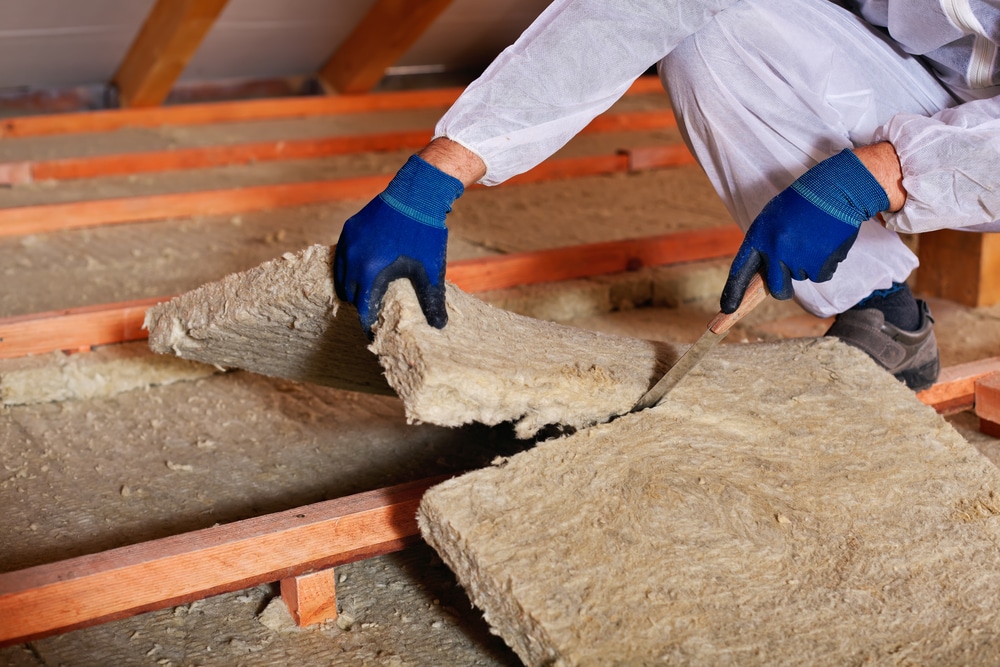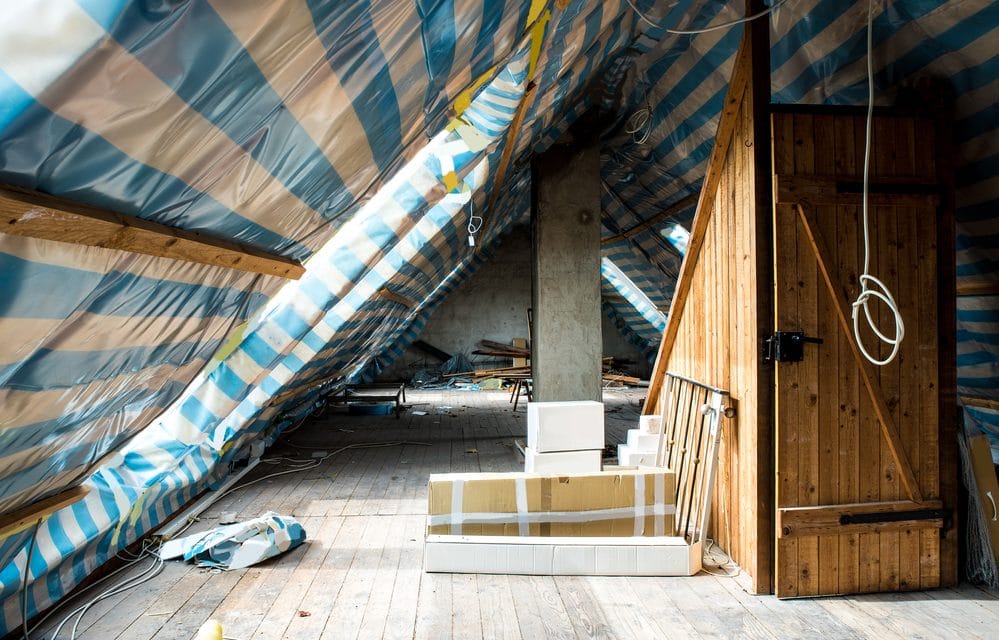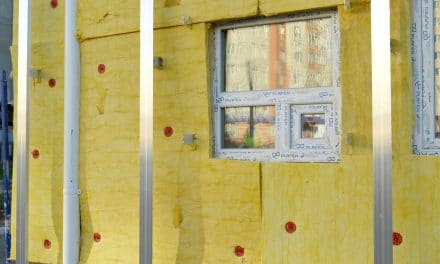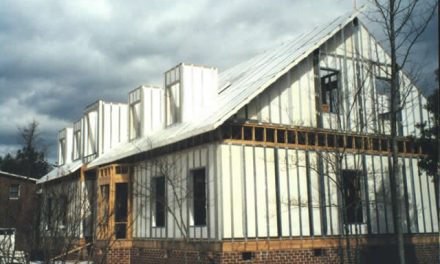You’ve Heard of Fiberglass Insulation, but Do You Know About the Other Types of Blanket Insulation?

Listen and Learn!
This comes courtesy of our friends at Build Your House Yourself University hosted by Michelle Nelson, informal residential construction student. She shares information on home building practices as well as interviews with experienced contractors and industry experts to bring you tips, tricks, and trends in home building.
For most people, blanket insulation is the insulation that comes to mind when they think about insulation in a home. Most of us have seen attics filled with pink or yellow insulation. That pillowy insulation that we’re familiar with is blanket insulation and in most cases, it was made of fiberglass, which is the most common type of insulation in the United States. But blanket insulation can be made not only of fiberglass but also of other flexible fibers such as cotton, mineral wool, and sheep’s wool.
We’ll get into more detail about fiberglass and other blanket insulations in a minute, but first, let’s go over our pro term for this week.
The Pro Term is Vapor Retarder.
A vapor retarder is a vapor resistant material or covering that helps control the amount of moisture passing through insulation and collecting inside walls, ceilings, and floors. Some vapor retarders are more permeable to vapor than others, allowing some movement of moisture. A vapor retarder is called a vapor barrier if it is completely impermeable to moisture, so it totally stops the penetration of moisture.
Let’s move on to our mini lesson.
Blanket insulation is made of flexible fibers and it comes in batts and rolls. A batt is a pre-cut segment of blanket insulation that comes in 4 foot or 8-foot lengths. And a roll is exactly what it sounds like. It’s a long roll of blanket insulation that you have to cut before installing. Rolls come in lengths up to 64 feet long.
Most pre-cut batts come in 2 standard widths. They are around 16 inches wide or around 24 inches, allowing them to be easily set into cavities between wall studs. Remember, we learned in episode16 that with traditional framing, wall studs are placed 16 inches on center, and with advanced framing walls studs are placed 24 inches on center.
Blanket insulation is available with or without an outer layer or facing. Facings can be made of kraft paper, which is a thin asphalt coating, foil-kraft paper, or vinyl. The facing is usually placed on only one side of the insulation and it acts as a vapor retarder. So, among other places, you’ll want faced insulation on your exterior walls. Insulation with a facing also has tabs on it that are used to fasten the insulation in place.
Unfaced insulation has no facing attached to it. Unfaced insulation is used where a vapor retarder is not needed, or when a separate vapor barrier is used, such as in a crawl space. Although a vapor barrier is needed in the crawl space, it’s usually provided by a layer of plastic sheeting on the ground.
Of all the types of insulation we’ll be talking about in the next few week, blanket insulation is the one that is best suited for do-it-yourselfers. However, getting the maximum R-value depends heavily on proper installation, so you may want leave installation to the professionals, unless you have previous experience with installation or unless you’ve done some studying on the subject.
If not properly installed, holes and gaps can be left between blanket insulation where air can circulate or condensation can occur and that will reduce the R-value.
To evaluate the job of your insulation subcontractor, you should measure the insulation thickness after its installed to confirm that the insulation thickness that you see, matches the thickness that is written in your contract. Also, check for gaps. Insulation should fit snugly in cavities and corners, without gaps. And there should be no air gaps between the insulation and the drywall.
Insulation should not be folded or excessively compressed, but it’s ok for batts to be split where necessary to fit around wiring and pipes. You want no gaps behind wiring, electrical boxes, or pipes.
Now, let’s talk specifically about fiberglass insulation.
FIBERGLASS INSULATION
Fiberglass insulation is affordable and widely available. It’s non-flammable and resistant to moisture and insect damage.
Disadvantages of fiberglass insulation are that it’s made mainly from glass fibers which can irritate your lungs and skin. In addition, most fiberglass insulation contains formaldehyde (although there are some newer versions that are formaldehyde free). Because fiberglass can be irritating, it’s recommended that you wear protective gear if you have to be around during installation. Another disadvantage is that fiberglass batts can settle and sag over time, decreasing its R-value.
Although fiberglass insulation can be used in most areas of the home, using fiberglass insulation in basements is not the best option because it can contribute to condensation.
Thicknesses of fiberglass batts and rolls range from 3 inches thick to 12 inches thick. And they come in standard and high-density versions. Standard fiberglass insulation has R-values ranging between 2.9 and 3.8 per inch. High-density fiberglass insulation has R-values between 3.7 and 4.3 per inch. But whether you choose standard or high-density insulation, the thicker the insulation, the greater the R-value.
COTTON INSULATION
Cotton insulation is sold as unfaced batts or rolls made with 75-85% recycled material. It’s made mostly from scraps of fabric left over from manufacturing denim. The R-value of cotton insulation ranges from 3.5 to 3.7 per inch, so it’s similar in R-value to fiberglass insulation. Cotton insulation has more sound-blocking qualities than standard fiberglass insulation, so rooms with cotton insulation may be quieter than those with fiberglass.
Unlike fiberglass, cotton insulation contains no fibers that can irritate the skin and lungs. And it contains no formaldehyde.
Despite, its advantages, many subcontractors have complained that cotton batts and rolls are difficult to install because they are manufactured in unusual widths. They are usually slightly too wide to fit into standard wall cavities. And because the cotton batts are compressed for shipping, they often don’t spring back out to match the thickness listed on the label. Another downside to cotton insulation is that it can cost twice as much as fiberglass, but, as stated before, cotton has an R-value similar to fiberglass. So you pay more, but don’t get more insulating capacity.
MINERAL WOOL INSULATION
I had never heard of mineral wool insulation before doing research for this podcast. It is similar to fiberglass insulation but instead of being made of fibers of glass, it’s made from either waste products of steel production, or from fibers of natural rock. It is sold as unfaced or foil-faced batts or rolls.
Mineral wool is known for its sound absorption and is often used for soundproofing rooms. It also handles high heat well, so it may be a good choice for insulating around chimneys. It’s fire-resistant is sometimes used as a fire barrier.
The R-value of mineral wool insulation is R- 3.7 per inch. Like fiberglass, it can irritate the lungs and skin, so protective gear is necessary if you plan on being around during its installation.
Since fiberglass insulation entered the market, mineral wool insulation is only rarely used as the primary type of insulation residential construction, so it can be difficult to find and mineral wool insulation is moderately expensive.
SHEEP’S WOOL INSULATION
Last on our list is sheep’s wool insulation. Sheep’s wool insulation is not commonly used in typical residential construction, but it IS a common choice for log and timber-framed homes (timber-framed homes are framed with large wooden beams instead of 2×4 or 2×6 dimensional wood). Sheep’s wool insulation is mechanically held together or it is bonded together using adhesive.
Wool is naturally breathable and it absorbs and releases moisture without losing its insulating properties. Sheep’s wool fibers are non-irritating fibers and contain no formaldehyde, so no special gear is needed for installation. And get this, surprisingly wool is flame retardant and non-combustible, meaning if it catches fire, it won’t readily burn. Other advantages are that It keeps its shape and doesn’t settle or sag over time.
Downsides to wool are that wool insulation can be hard to find in the United States, but is readily available in the UK and Australia. And wool is often treated fungicides and pesticides and Borax and those residues may be present in the insulation.
Well, that’s it for our mini lesson on blanket insulation. Let’s see how you do on the quiz.
QUIZ:
1. Blanket insulation is made of all of the following except:
A. sheep’s wool
B. mineral wool
C. cashmere wool
D. cotton
E. fiberglass
The answer is C— cashmere wool. Cashmere wool, more commonly called cashmere is better suited for sweaters and scarfs than for insulation. It’s made from the soft undercoat of goats.
2. What are batts?
Batts are pre-cut segments of blanket insulation. They come in 4 foot or 8 foot lengths. And can you remember the standard widths of batts?
Most batts are around 16 inches wide or around 24 inches wide so they can fit easily into cavities between wall studs.
3. What is a disadvantage of fiberglass insulation?
A. It’s expensive.
B. It’s irritating to the skin and lungs.
C. It’s made of harmful rock fibers
D. Fiberglass batts are pre-cut into odd widths.
The answer is B. Fiberglass insulation is irritating to skin and lungs, therefore protective gear is recommended during installation. Other disadvantages of fiberglass insulation are that it can settle and sag down into the wall cavity over time, decreasing its R-value. And it’s sometimes made with formaldehyde.
Fiberglass insulation is not expensive— it is one of most affordable insulation options. Fiberglass is made mostly of glass fibers. It’s mineral wool that’s made of rock fibers. Fiberglass batts come in standard widths of about 16 inches or 24 inches wide. But cotton batts are precut into odd widths which are a bit too wide for standard 16-inch wall cavities.
Well, that’s all I’ve got for you this week. Next week, we’ll continue talking about insulation so you can make an informed decision about what insulation is best for your home.








